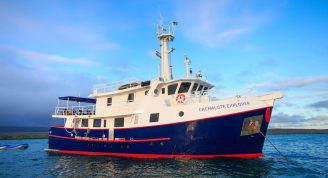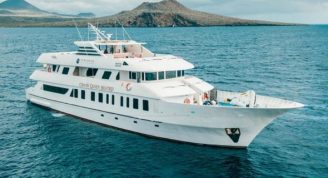Description
Small ship cruising in the Galapagos Islands offers a unique and immersive experience for travelers. Unlike larger cruise ships, small ships typically carry fewer passengers, providing a more intimate and personalized experience. This allows passengers to fully immerse themselves in the natural beauty of the islands, with the opportunity to explore remote locations and encounter wildlife up close. Additionally, smaller ships can access areas that larger vessels cannot, providing a more comprehensive and in-depth exploration of the Galapagos. Small ship cruising also provides a more sustainable and eco-friendly way to explore the Galapagos. The islands are a delicate ecosystem, and larger ships can have a negative impact on the environment. By choosing a small ship, travelers can enjoy the beauty of the islands without leaving a significant footprint.











